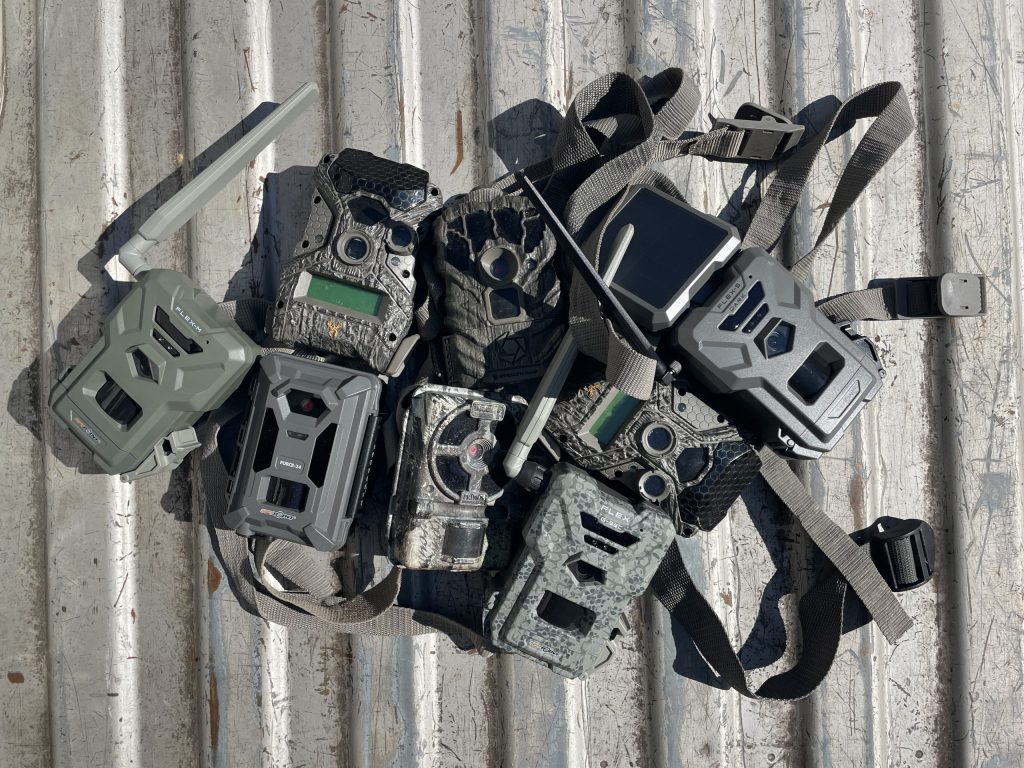Eyes in the Woods: Picking the Right Trail Camera
There are always going to be debates anytime technology enters the hunting conversation — especially when it comes to trail cameras. But that’s a debate we aren’t going to have today. Instead, we’ll present the types of cameras you can use, their hunting applications, the drawbacks of each and their relevance for conservation efforts.
The number of camera manufacturers is at an all-time high and most offer a wide variety of models. This isn’t a pitch for any particular brand. Still, we expect the comments section to be full of strong opinions, like a classic Chevrolet vs. Ford debate.
Cellular Cameras vs Traditional Cameras
Traditional cameras are triggered to take an image or video by changes in heat signatures and movement, and the image or video files are stored on a removeable memory card for the owner of the camera to download to a secondary device for viewing. Also, accessing the card and images often means freuqnet in-person interaction at the camera’s site in the field.
Advantages of using traditional trail or game cameras include:
Lower costs — there is no monthly transmission charge, just a one-time purchase cost and batteries.
Usability across the country — according to Congressional Sportsman’s Foundation, nearly 10 states have banned or limited the use of cellular trail cameras during hunting seasons.
Cellular Cameras, similarly, use infrared sensor technology to take images or video; however, the images are transmitted to an online portal where images can be accessed from a phone (via an app or email) or computer. Viewing, filtering, integration with mapping software and file management of the camera’s images can also be done remotely via internet connection or mobile app. Costs for monthly subscriptions can vary depending on photo quality, total image or video transmission. However, brands like Spypoint even offer a plan with free transmission of up to 100 photos a month.
Advantages of cellular cameras include:
Ease of access — images can be accessed in near real-time, or as often as the user chooses to transmit images or videos.
Less impact on wildlife — the only time it is necessary to access the device in person is to change batteries or hang or remove the cellular camera.

Hunting and Conservation Applications
There are many benefits to running cameras, both traditional and cellular.
Wildlife Abudance
As hunters and conservationists, we like to be stewards of the land and the wildlife that inhabit the places in which we recreate. For hunters and wildlife managers, running cameras can help to better estimate the total count of turkeys, deer or other wildlife species and infleunce management decisions.
For instance, if the same bachelor group of toms are the only male turkeys seen on camera on your property, that can — and probably should — have bearing on how many birds you choose to take in a given season.
For NWTF conservation and research efforts, cameras assist researchers with inventory of turkeys in an area and assist in best planning for potential trapping sites.
Habitat Management
In addition to knowing population estimates, landowners and hunters typically want to know wildlife useability of habitat on the property they are hunting or managing. By using several cameras across a property, one can learn more about activity levels within certain habitats, as well as patterns of use based on time of day or year.
For example, the habitats within the property that turkeys use changes based on time of year and even can vary based on the progression of periods that make up the breeding season.
When it comes to monitoring habitat in a conservation sense, the NWTF or its agency partners may use cameras to monitor activity within an area after management efforts. Results can be used to showcase progressions of use based on methods used to restore an area to its desired state as well as use by wildlife species.
General Monitoring and Reduced Human Impact
Unless you live on your property, traveling to and from your hunting locations takes time and money, and the human element on the landscape can cause additional impacts to wildlife. Running cameras all year round can increase knowledge of the property while having less run-ins with wildlife, even when running traditional cameras.
And when using cellular trail cameras near entry or access points, it can help keep landowners and land users abreast of unwanted access to the property by trespassers in real time, thus acting as a digital security system.
When it comes to conservation-related applications, cameras also can be used by wildlife law enforcement officers. They may monitor sites where illegal hunting practices have been discovered, and they are trying to learn who the culprit may be. This could be illegal bait sites, discovered stands that appear to be used outside of seasons and hunting areas not open to hunting, among others.
With expanded knowledge of applications and versatility of the numerous traditional and cellular cameras on the market, start doing some research to find out which ones fit your needs best.
And know that regardless of your choice, cameras can be a useful tool for hunters, wildlife managers, law enforcement officers and conservationists.
